By Jason Bornn
Head Football Coach
Saugus High School (CA)
Twitter: @JasonBornn1
Introduction:
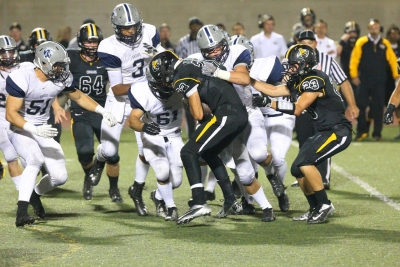 We are a 3-4 multiple blitz scheme team which means that we will see subtle differences in pass protections to the standard even front static fronts that some teams employ. One of the challenges we have as an odd front defense is identifying the type of pass protection a team is going to use against us. I sat down with Tim Tulloch, the defensive coordinator at San Mateo CC (CA) and discussed this problem. It was after reading his material and discussion with him that we were able to better understand pass protection schemes and how to best attack them.
We are a 3-4 multiple blitz scheme team which means that we will see subtle differences in pass protections to the standard even front static fronts that some teams employ. One of the challenges we have as an odd front defense is identifying the type of pass protection a team is going to use against us. I sat down with Tim Tulloch, the defensive coordinator at San Mateo CC (CA) and discussed this problem. It was after reading his material and discussion with him that we were able to better understand pass protection schemes and how to best attack them.
We have several ways to determine which one a team will employ versus us. We classify the pass protections we most often see into eight categories. The first four are:
1. Man Fan (Diagram 1)
2. Man Dual Read (Diagram 2)
3. Partial Slide (Diagram 3)
4. Full Slide (Diagram 4)
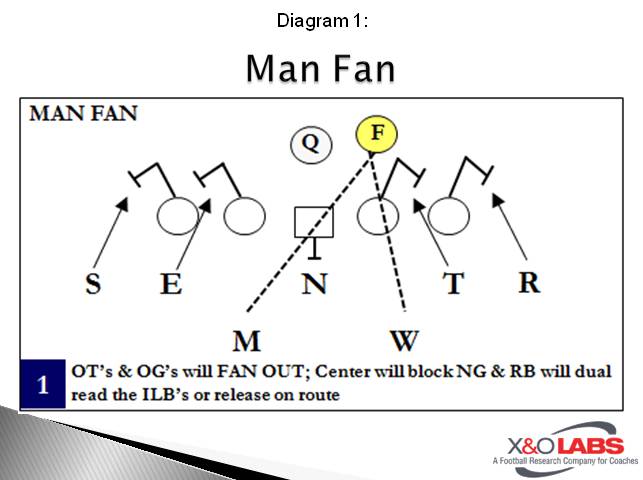
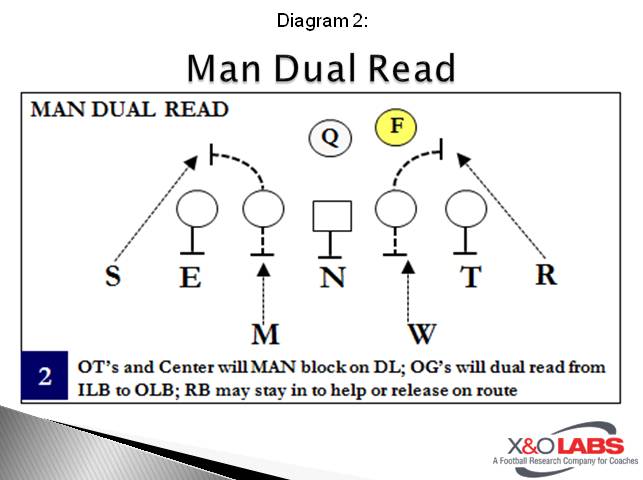
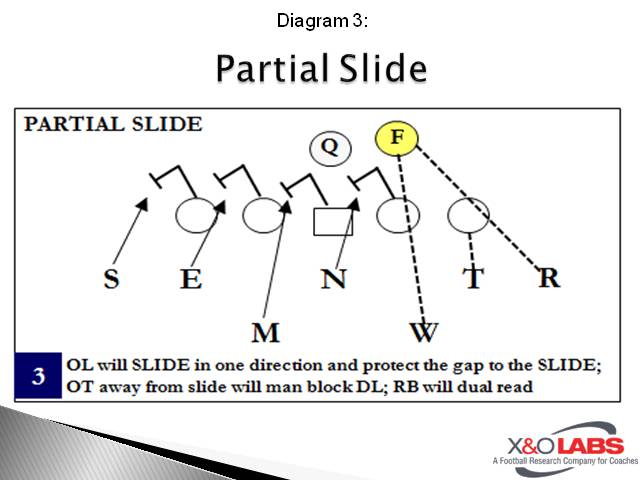
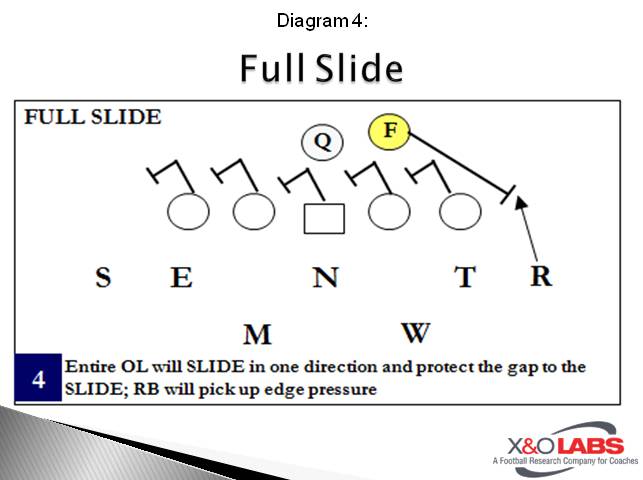
In each of these, the RB can be utilized as either a blocker or receiver.
The other categories we designate are:
5. Sprint Out (Diagram 5)
6. Play Action (Diagram 6)
7. Bootleg (Diagram 7)
8. Naked (Diagram 8)
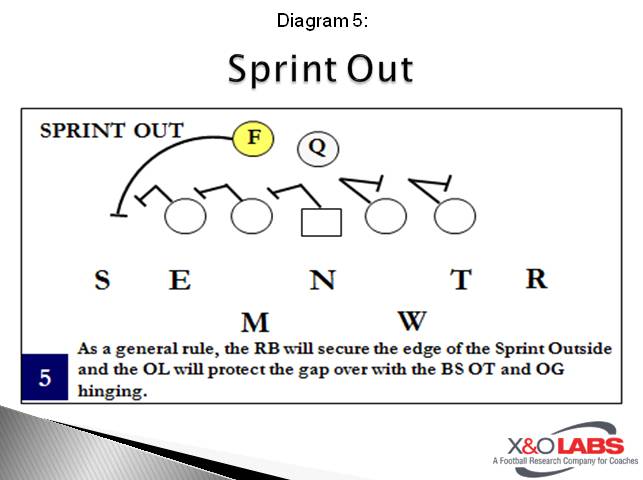
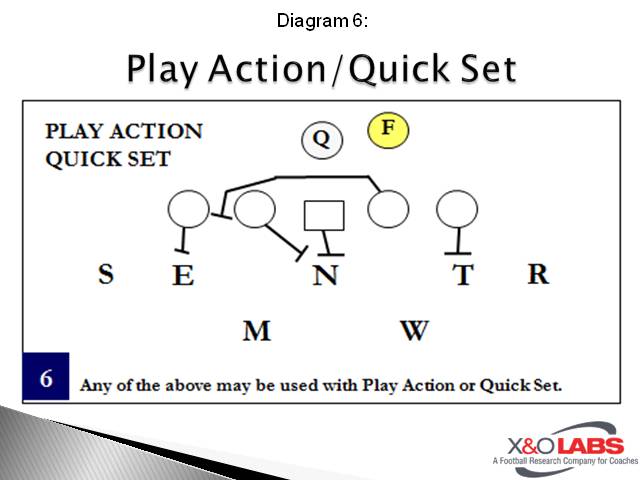
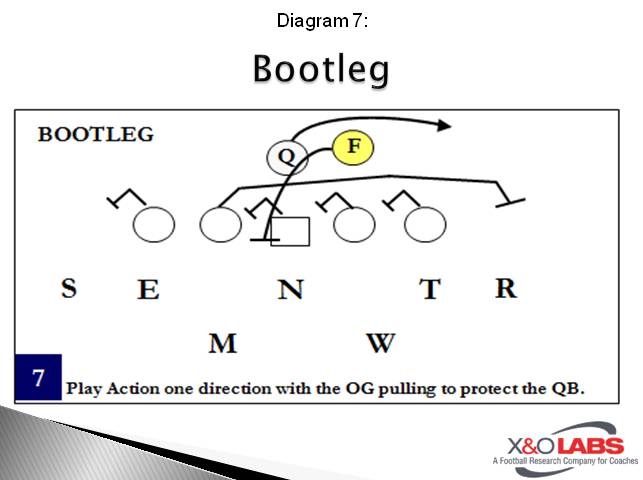
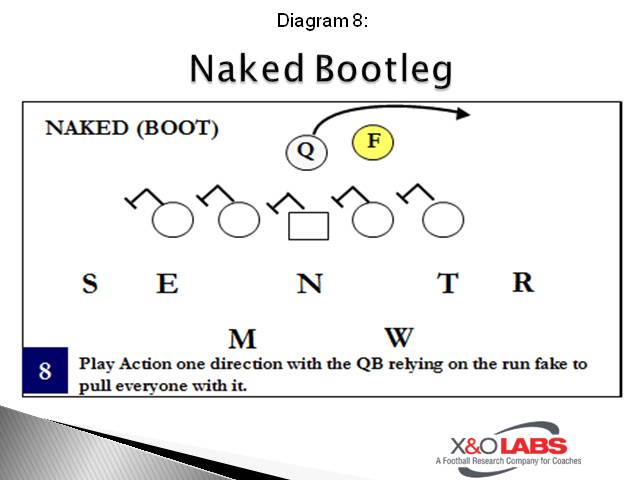
In each of these four, there are specific rules and actions of the OL and RB that apply. We do you have certain attacks we will employ versus these but for the purpose of this article, we will focus on the four we see the most of (Man Fan, Man Dual Read, Partial Slide, and Full Slide).
For each of these protections, we will have a 4 man, 5 man, and 6 man attack that we will utilize. Once we identify the pass protection that we will face each week, we will create a menu for each of the attacks (4 man, 5 man, and 6 man) that will employ. For example, if a team is a Man Fan Pass Protection team, we will have two or three 4 man schemes, two or three 5 man schemes, and two or three 6 man schemes. We will go over one of each for the four pass protections we see the most of each week.









